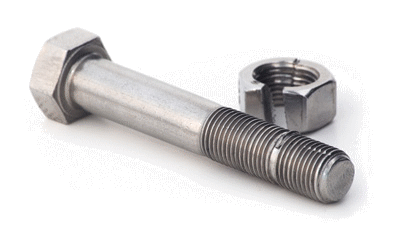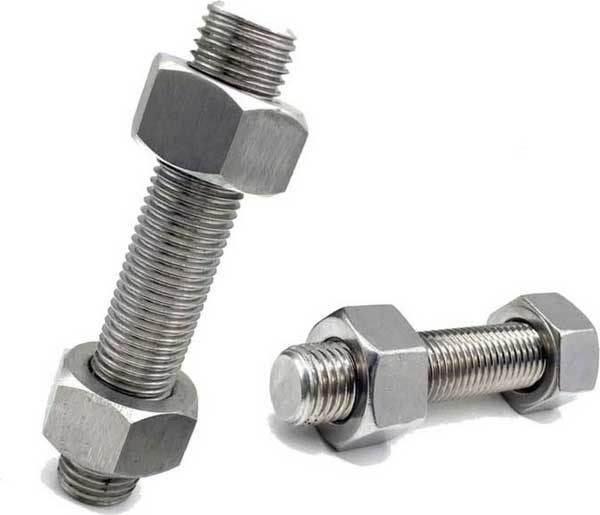 |
What is Cold Welding? |
Cold welding also known as Thread Galling is a phenomenon that can occur during the tightening - mainly at high speed - of threaded connections.
It is caused by a combination of pressure and friction (high friction value in stainless steel). You notice it when, while tightening a bolt, the threads get stuck in a nut or tapped hole. And, once the bolt is stuck you usually can't remove it the normal way. Then it becomes grinding, drilling or tapping.
How does cold welding occur?
During the tightening of fasteners, the pressure between the contact surfaces increases. This creates friction and damages the thread surface of both the external and internal threads.
These damaged surfaces then adhere to each other. The threaded connection seizes and, in extreme cases, the bolt or screw even breaks off.
Soft materials are often more sensitive than harder materials. Cold welding usually occurs with fasteners made of stainless steel, aluminum and titanium.

How to prevent cold welding?
- Tightening threaded connections at too high a speed is a common cause of cold welding. The higher the RPM, the more friction and thus a greater chance of thread deposition. So tighten the joint at a lower speed. This often reduces the problem or even solves it completely
- Use lubricants (anti-seize)
- In the case of stainless steel fasteners, choose a different quality for the nut than the bolt. However, the strength of the nut should always be greater than that of the bolt. In this case, bolts of stainless steel A2-70 quality are used in combination with nuts of stainless steel A4-80
- Avoid using fasteners whose threads are damaged. The presence of dirt can also increase the risk of cold welding
- Do not use a bolt to pull or push parts together. If you do, it will create additional pressure on the thread surface. It is better to bring the parts together in advance using clamps or adhesive pliers
- Use pre-coated bolts
EXPERT'S ![]() EXPERIENCES
AND RECOMMENDATIONS ON PREVENTING GALLING OF STAINLESS STEEL FASTENERS
EXPERIENCES
AND RECOMMENDATIONS ON PREVENTING GALLING OF STAINLESS STEEL FASTENERS
Surface defects in the thread
These are usually caused when rolling threads on surfaces that have already been work hardened.
They are characterized by a cracked, jagged, and flaky surface on the thread flanks. These surface
defects increase the surface area and thus the area exposed to corrosive influences.
Incorrect tool selection
Under certain circumstances, the tools used may not be suitable for processing the material. For
example, when cutting a thread with an unsuitable tool, the thread may not be cut cleanly and
completely, which can lead to cold welding during assembly. The same applies to the forming of
threads. Here, too, the aforementioned situation can occur due to incorrect or defective tools.
Hardness difference
One of the most common causes of Galling is when the hardness difference between the screw and
nut threads is too small. This difference is essential to prevent the connecting elements from
permanently bonding (galling) due to physical-chemical reactions. A hardness difference of at
least 50 HV should be aimed for in order to minimize the risk. This is usually ensured with
cold-formed fasteners of the same strength class, as the screw thread undergoes significant work
hardening in the thread flanks during the forming process. To reduce the risk when using different
materials, the delivery conditions (mechanical properties) of the starting materials should be
compared before production.
Additional safety can be achieved by using appropriate lubricating pastes, which are applied to
the screw thread before assembly. This measure is often used in so-called hot screw connections
to prevent the fasteners from welding together at high operating temperatures.
Related Post(s)

The most common stud bolts materials covered by ASTM A193...